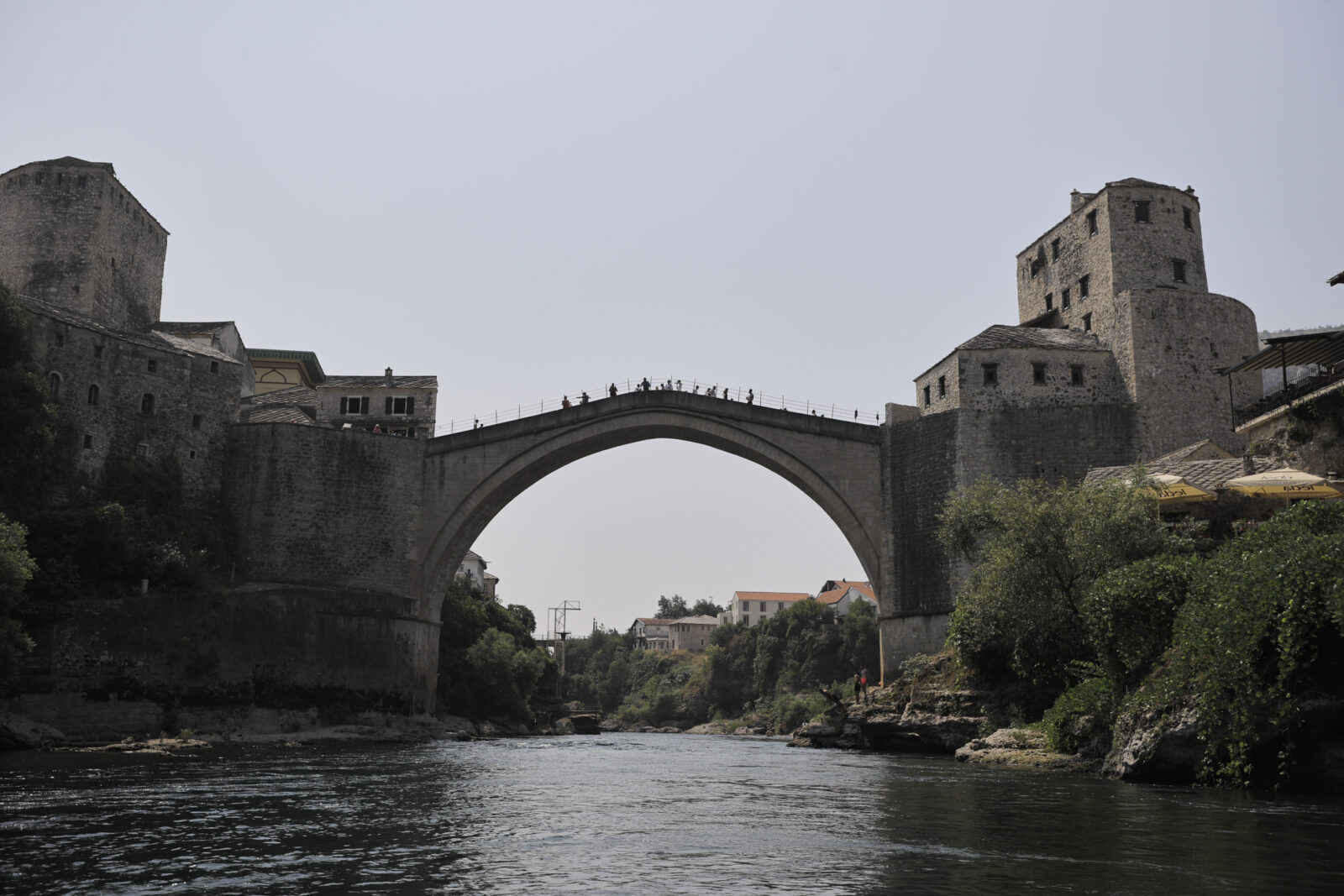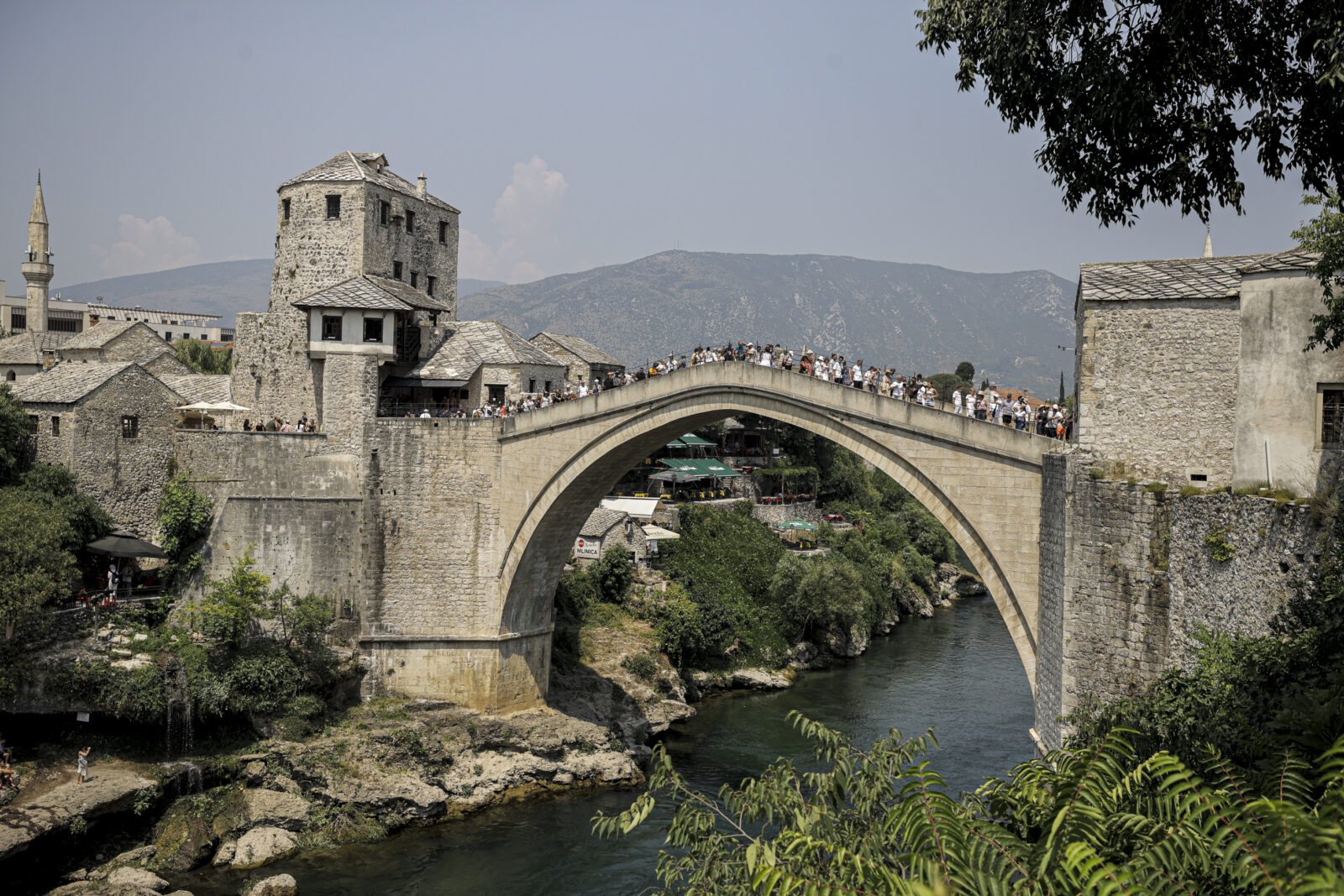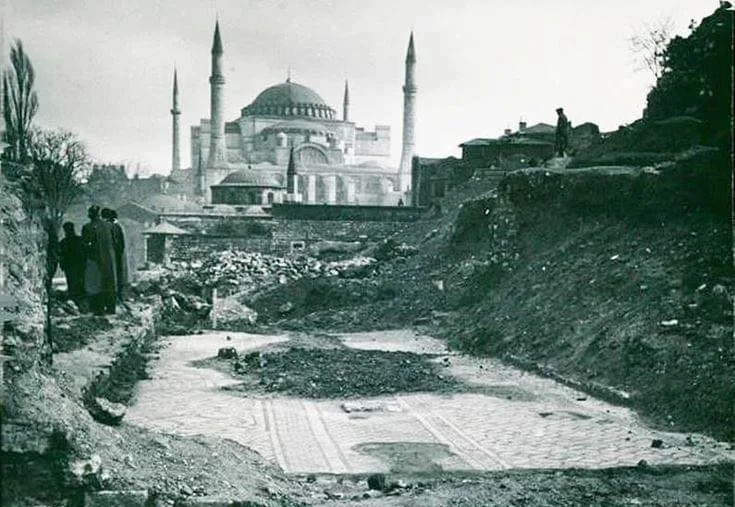Ottoman legacy of Mostar Bridge: 20 years of resurgence
 Mostar Bridge, known as the “Ottoman necklace” of the Neretva River in southern Bosnia and Herzegovina, July 22, 2024 (Photo by AA)
Mostar Bridge, known as the “Ottoman necklace” of the Neretva River in southern Bosnia and Herzegovina, July 22, 2024 (Photo by AA)
Standing gracefully over the Neretva River in southern Bosnia and Herzegovina, the Mostar Bridge, often referred to as the “Ottoman necklace,” has been a symbol of resilience for 20 years since its reconstruction. Described as “unique” by Ottoman explorer Evliya Celebi, this historic bridge was destroyed during the war in 1993 but was revived in 2004, spearheaded by Türkiye.
Rebirth of symbol
Designed by Mimar Hayrettin, a student of the renowned Ottoman architect Mimar Sinan, the Mostar Bridge was originally built in 1566. It was destroyed by Croatian artillery units during the Bosnian War on Nov. 9, 1993.
The reconstruction of the bridge began in 1997 with the support of the Turkish Cooperation and Coordination Agency (TIKA), UNESCO, the Islamic History, Art and Culture Research Center, and the World Bank.
Original stones were retrieved from the riverbed by Hungarian army divers, and the bridge was reopened on July 23, 2004, by Prince Charles of the United Kingdom, with numerous high-level representatives from various countries in attendance.

Symbol of peace and cultural diversity
The bridge is recognized as a symbol of tolerance and cultural diversity in Bosnia and Herzegovina. For centuries, it has been used as a diving platform by athletes and as a testament to the courage of young people in Mostar.
In 2005, the Mostar Bridge was inscribed on the UNESCO World Heritage List, solidifying its status as a historical monument and a symbol of peace and coexistence in Bosnia and Herzegovina.
Türkiye’s leading contribution
Safet Orucevic, director of the Mostar Center for Peace and Multi-Ethnic Cooperation, was the mayor at the time of the bridge’s destruction. Orucevic highlighted the many challenges faced during the reconstruction process, noting that the collaborative efforts of all ethnic groups helped restore peace.
“Türkiye was the first country to donate $1 million for the bridge’s restoration, and other donors soon followed suit,” said Orucevic, emphasizing the significant support from then-Turkish President Suleyman Demirel.

Economic revival of Mostar
The reconstruction of the bridge significantly contributed to the economic development of Mostar. Tourism thrived around the bridge, with Orucevic stating, “Twenty years after its reconstruction, the notion of it being ‘Croatian cultural heritage’ is not even worth addressing.”
Today, Mostar boasts at least 20 hotels and hundreds of guesthouses and apartments. The bridge’s reconstruction brought economic vitality to the city, comparable to bringing life to Hiroshima.
Destruction and defense struggle
Orucevic noted that the destruction of the bridge aimed to demoralize the population, saying, “They wanted to destroy the essence of Mostar and thought they had completed their task of ethnic cleansing. However, we defended ourselves, and this is a historic defense.”
For the past 20 years, the Mostar Bridge has stood as a symbol of peace, tolerance, and rebirth.



